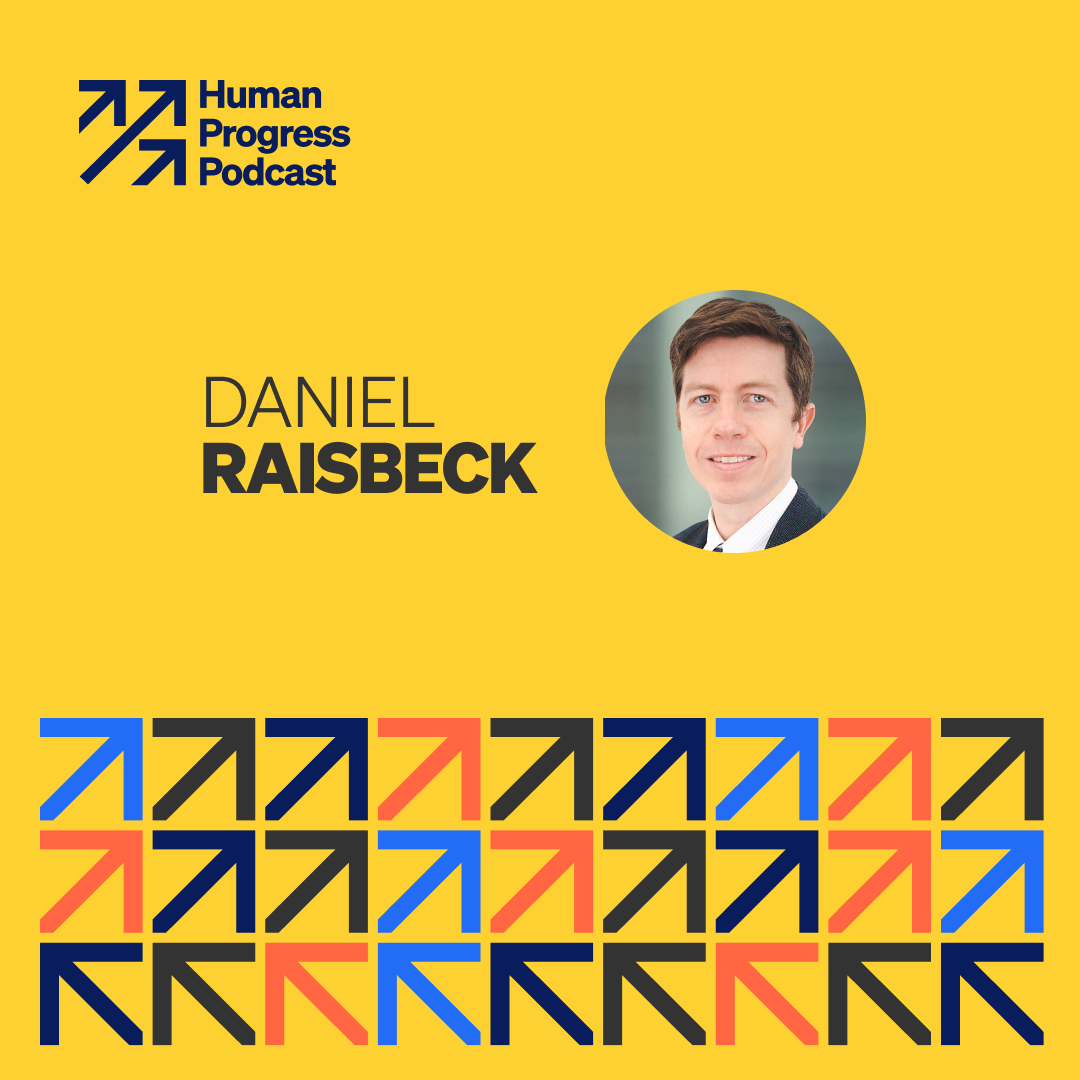Today marks the eighteenth installment in a series of articles by HumanProgress.org called Centers of Progress. Where does progress happen? The story of civilization is in many ways the story of the city. It is the city that has helped to create and define the modern world. This bi-weekly column will give a short overview of urban centers that were the sites of pivotal advances in culture, economics, politics, technology, etc.
Our eighteenth Center of Progress is Edinburgh. The city was at the heart of the Scottish Enlightenment – a vital period in intellectual history that spanned the 18th and early 19th centuries. The thinkers of the Scottish Enlightenment made important breakthroughs in economics, mathematics, architecture, medicine, poetry, chemistry, theatre, engineering, portraiture, and geology.
Today, Edinburgh remains Scotland’s intellectual and cultural center, as well as its capital. The city’s name comes from an old Celtic word, Eidyn, which is a name for the area, and burgh, which means fortress. A hilly city on Scotland’s east coast, Edinburgh is home to a famous castle dating to at least the 12th century. Edinburgh Castle is Scotland’s most-visited tourist attraction, drawing over 2 million visitors in 2019 alone. The city is also home to the University of Edinburgh, one of Scotland’s most prestigious universities. Edinburgh’s nicknames include Auld Reekie (Old Smoky) for Old Town’s smoky chimneys. The city is also sometimes called Auld Greekie, or the “Athens of the North,” for the city’s role as a hub of philosophy. Edinburgh’s medieval Old Town and neoclassical New Town together comprise a single UNESCO World Heritage Site.
Archeological evidence suggests that the area where Edinburgh now stands has been inhabited since at least 8,500 BC. Celtic tribespeople were the main inhabitants. Over the centuries, the area was ruled by various peoples, including Welsh-speaking Brythonic Celts. Edinburgh came under Scottish rule around 960 AD, when King Indulf the Aggressor seized the settlement. Edinburgh became the Scottish capital in 1437, replacing Scone.
Scotland in the 18th century had just undergone decades of political and economic turmoil. Disruption was caused by the House of Orange’s ousting of the House of Stuart, the Jacobite Rebellions, the failed and costly colonial Darien Scheme, famine, and the 1707 Union of Scotland and England. Yet Scotland, particularly Edinburgh, were to embark on an exciting new journey.
If you could visit Edinburgh during the Scottish Enlightenment, you would enter a cold, compact, walled-off city of winding, cobblestone streets. The Scottish author James Buchan has described the city of the era as “Inconvenient, dirty, old-fashioned, alcoholic, quarrelsome and poor.” But through the fog, you would see the warm glow of lights in the windows of the university buildings, the homes hosting reading societies and club meetings, and the taverns serving haggis and whiskey to patrons discussing philosophy. The city was alive with the energy of new ideas and the spirit of scientific inquiry. While Edinburgh was then a city of merely 40,000 residents, it was crowded with great minds tackling big questions.
It helped that the city’s religious culture was welcoming to new ideas. The dominant Presbyterian Church had just undertaken a successful literacy campaign. Scotland, then one of Western Europe’s poorest countries, enjoyed perhaps the world’s highest literacy rate. The reigning faction within the Presbyterian Church was comprised of moderate, open-minded clergymen. Those moderates formed close ties to many of the Scottish Enlightenment’s key figures and encouraged their work. There was also a more conservative faction within the Presbyterian Church that disdained the Enlightenment scholars’ work and even tried to excommunicate the philosopher David Hume (1711–1776) for heresy. The better-connected moderate faction within the church shielded Hume from ex-communication.
The moderate Presbyterian Reverend William Robertson (1721–1793) became the University of Edinburgh’s principal and founded one of the Scottish Enlightenment’s most prominent intellectual societies in 1750. Robertson’s Select Society of Edinburgh counted among its members such luminaries as Hume, the philosopher and historian Adam Ferguson (1723–1816) and the economist Adam Smith (1723–1790).
Much like the French Enlightenment’s Parisian salons, the numerous reading societies and intellectual men’s clubs that sprung up throughout Edinburgh enabled the city’s success. Unlike in Paris, where women often hosted salons, sexist cultural norms excluded women from Edinburgh’s intellectual gatherings, with rare exceptions such as the poet and socialite Alison Cockburn (1712–1794). A modern woman would not wish to live in 18th-century Edinburgh, but the men at the time found the networking and debate opportunities afforded by the city’s various clubs invaluable. The French writer Voltaire opined in 1762 that “today it is from Scotland that we [Europeans] get rules of taste in all the arts, from epic poetry to gardening.”
Scotland made its mark in the literary realm, producing such figures as the inimitable poet Robert Burns (1759–1796) and the Edinburger novelist Sir Walter Scott (1771–1832). Scotland also pioneered new landscaping, architectural, and interior design tastes. That was thanks largely to the Edinburgh-raised-and-educated architect Robert Adam (1728—1792). Together with his brother James (1730–94), he developed a new approach to architecture known as the “Adam style.” The “Adam style” influenced many residences in 18th-century England, Scotland, Russia, and the United States after Independence, where it evolved into the so-called “Federal style.” Scotland also led the way in portrait painting, thanks to taste-making Edinburger painters such as Allan Ramsay (1713—1784) and Sir Henry Raeburn (1756—1823).
While the Scottish Enlightenment produced many contributions to the arts and humanities, it also gave rise to groundbreaking work in the sciences. Thomas Jefferson, in 1789, wrote, “So far as science is concerned, no place in the world can pretend to competition with Edinburgh.” The Edinburger geologist James Hutton (1726—1797) redefined his field by developing many of the fundamental principles of his discipline. The chemist and physicist Joseph Black (1728—1799), who studied at the University of Edinburgh, discovered carbon dioxide, magnesium, and the important thermodynamic concepts of latent heat and specific heat.
The physician William Cullen (1710–1790) helped to make Edinburgh Medical School into the English-speaking world’s leading medical education center. There he helped to train many notable scientists, including Black and the anatomist Alexander Monro Secondus (1733–1817). The latter was the first person to detail the human lymphatic system. Sir James Young Simpson (1811–1870), admitted to the University of Edinburgh at the young age of fourteen, went on to develop chloroform anesthesia. That invention vastly improved the experience of surgery patients. It also saved Queen Victoria and countless other women from unnecessary suffering during childbirth.
The Scottish Enlightenment also advanced mathematics and engineering. The mathematician and University of Edinburgh professor Colin Maclaurin (1698–1746), a child prodigy who entered university at age 11, made notable contributions to the fields of geometry and algebra. The civil engineer Thomas Telford (1757–1834), who worked for a time in Edinburgh, was so prolific that he earned the nickname the Colossus of Roads (a play on one of the Seven Wonders of the ancient world, the Colossus of Rhodes). The Scottish engineer and inventor James Watt (1736—1819) greatly improved the steam engine’s design and thus helped to bring about the Industrial Revolution.
The American author Eric Weiner has argued that the key to Edinburgh’s sudden, unexpected success was Scottish practicality. The Encyclopædia Britannica, which was founded in Edinburgh in 1768 and was thus an invention of the Scottish Enlightenment, also claims that underlying the city’s diverse achievements were several notable developments in Scottish philosophy, all of which had a practical bent. Those developments were skepticism toward the so-called rationalist school of thought (which held that all truths could be deduced through the use of reason alone), a focus on empirical methods of scientific inquiry, the emergence of a philosophy of “common sense,” and attempts to develop a science of human nature.
Popularization of empiricism was among the greatest contributions of the Scottish Enlightenment to human progress. Relatedly, “common sense realism,” advanced by thinkers such as Ferguson, emphasized real-world observations rather than abstract theorizing and held that the uneducated, common man was an intellectual’s equal in matters of basic common sense. Common sense realism influenced the thinking of the U.S. Founding Fathers Thomas Jefferson and John Adams, among others. Hume’s A Treatise of Human Nature (1739), among the most influential philosophical works in history, was the foundational text of cognitive science.
The desire to understand human behavior gave rise not only to cognitive science, but also to economics. Adam Smith is widely regarded as the founder of modern economics. His An Inquiry into the Nature and Causes of the Wealth of Nations (1776) was among the first works to delve into such topics as the division of labor and the benefits of free-trade economies (as opposed to mercantilism and protectionism). The work not only influenced economic policy soon after it was published, but helped to define the terms of economic debate for centuries. Every important economic thinker since Smith, including those who strongly disagreed with Smith, such as Karl Marx, nonetheless cited the Scotsman and wrestled with his ideas.
By creating the field of economics, Smith helped humanity to think about policies that enhance prosperity. Those policies, including economic freedom that Smith advocated, have since helped to raise living standards to heights that would be unimaginable to Smith and his contemporaries. (Explore the evidence for yourself).

Edinburgh was an improbable Center of Progress. A relatively small, unkempt, and inhospitable locale emerged from a century of instability to take the world by storm. Widespread literacy, open-mindedness, intense debates at intellectual gatherings, and a practical grounding aided the city’s successes. Edinburgh was essentially a small university town that punched far above its weight in human achievement. The American Founding Father Benjamin Franklin noted that “the University of Edinburgh possessed a set of truly great men … as have ever appeared in any age or country.” For its innumerable achievements, and particularly for giving humanity empiricism and economics, Scottish Enlightenment-era Edinburgh is rightfully our eighteenth Center of Progress.




